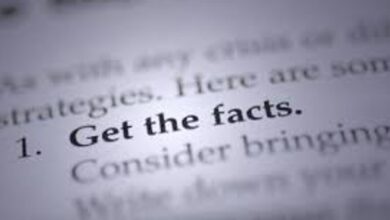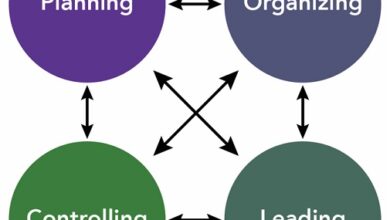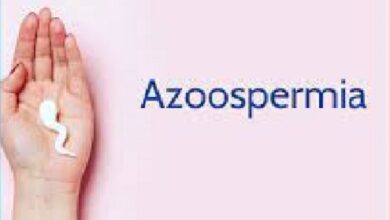What is Field Diary Characteristics purpose and Example
Field Diary
A field diary is a data collection instrument used especially in research activities. After recording the data, the information is submitted to evaluations and interpretations. Its name is due to the fact that facts are recorded directly in the physical space where they occur.
The data collected in the field diary are of several types. These can be keepsakes, travel stories, ideas, conversation snippets, diagrams, maps, and transcripts. The collection has an objective nature, but the newspaper itself is subjective.
This is due to the fact that the format used for its elaboration depends, to a large extent, on the researcher’s style and objectives. Thus, the relationships described in a field diary are reality, but they are seen through the eyes of the researcher.
Furthermore, this subjectivity is repeated when the researcher begins to interpret the records. Due to all this burden of subjectivity, the field diaries of different researchers involved in similar investigations are not necessarily the same.
On the other hand, as the field diary is an official record of the activities of a particular researcher, it must be ordered sequentially. That is, the records are included in the same order in which they are generated. It also includes qualitative and quantitative, descriptive and analytical information.
A good field diary allows the formulation of statistics, diagnosis, prognosis and assessment of the situation. Likewise, it allows the location of holes in the sequence of information. In the same way, its sequentially allows the planning of future activities necessary for the development of the research.
Characteristics
Collect information to be evaluated
The scope of a field diary is the collection of all kinds of information that are likely to be evaluated after being collected. This feature makes it ideal for recording data from scientific activities.
In this sense, it is an ideal tool in the natural and social sciences. Anthropology, sociology, ethnography (observation of the cultural uses of a social group), archeology, among others, configure a suitable environment for the use of this tool.
On the other hand, the field journal also has application in many areas of education. Its frequent use is related to the evaluation of practical activities carried out by students.
On the one hand, reviewing journals allows teachers to assess the achievement of objectives and the level of knowledge acquired. In addition, it allows measuring the acquired writing and composition skills.
There is subjectivity implicit in objectivity
The purpose of a field journal is to collect real and objective information. However, the editor of the newspaper, at the same time as the collection, enriches it with his personal comments – which he also registers in the newspaper.
In this way, it is easy to check whether the course of the process carries the planned sequence. Likewise, it allows you to see possible events according to the chronological sequence of events. This action of recording thoughts, ideas or assumptions introduces a first element of subjectivity into the process.
Depending on the objectives pursued, the same data can suggest who produces the newspaper in one way or another. Likewise, subjective elements are introduced when thoughts, ideas or assumptions have to do with sensory observations (appearance, smell and taste, among others)
On the other hand, subjectivity is also present when data are interpreted. This time, depending on the newspaper editor’s experience and experience, the information is analyzed in one way or another.
has a personal character
Regardless of the form of its presentation, the preparation of the field diary is done in person. All logs are handmade from field work.
Even in the case of teamwork, each of the team members keeps his own diary. If the results are group results, the team meets, discusses the notes in each of their diaries, and issues a consensus version.
Is focused on a particular problem or activity
Regardless of its scope, the field diary is focused on a problem or activity that is the subject of an investigation.
As in real life it is impossible to isolate all situations (due to the law of the effect that they influence each other), redundant data can be recorded. This leaves the newspaper out of focus.
To avoid this and keep the journal (and consequently the research) focused, it is necessary for the editor to have sufficient theoretical knowledge about the collected data.
On the other hand, the number of journals kept corresponds exactly to the number of situations under investigation.
Is accurate and organized
Due to the nature of the situations (some of them may only occur once during the entire investigation), the field diary must be accurate. The editor’s theoretical knowledge must anticipate the occurrence of the event in order to register without losing details.
Therefore, this record must be sufficiently detailed in time and space. Some researchers even record information that – apparently – is not related to the studied phenomenon. Thus, records about the predominant climate can be found at the time of data collection (rainy, sunny, cold, hot).
In addition, the field diary must be organized. The arrangement can be strictly chronological or follow specific conditions. Once the array is selected, it is maintained across all records.
With this, the relational integrity of the events remains and the review and interpretation of the records are facilitated.
What is a field diary used for?
A field diary serves both in the field of non-experimental scientific research and in the educational field. In this sense, field research differs from experimental (laboratory) research, as its conditions are not controlled. Consequently, the occurrence of events is unpredictable and can even be violent.
On the other hand, in field investigations, ideal conditions for data recording are not guaranteed. In these circumstances, a field journal fulfills the objective of preserving the observations made for the future. On the other hand, it accumulates, categorizes and synthesizes the information that will be the object of interpretation and analysis.
Regarding its use in education, the field journal represents for teachers an appropriate mechanism for evaluating multiple activities.
Through consultation, they can evaluate methodologies, advances and achievement of objectives in each of the phases of the teaching activity.
Through this tool, educators can identify weaknesses and plan future tasks. In addition, being a personal activity, each student can be evaluated in relation to his ability to synthesize and his ability to detect important events in the course of an activity.
How do you keep a field diary?
When starting a field diary, it is necessary to establish a methodology that guarantees the integrity of the collected data.
Although journal structuring is a personal matter, there are general rules to follow that come from recommendations from scientists who use this tool. Here are some of them.
Detailed start of tickets
In each of the opportunities in which new data are entered in the field diary, one should begin to describe the conditions of the environment. This allows for plenty of detail around the data to facilitate its subsequent interpretation.
As a recommendation, the location and name of the site from which the events and the names of the people involved are incorporated is suggested.
Likewise, it is suggested to detail important details of the day, such as date and time. Depending on the type of search performed, details such as weather conditions may be incorporated.
Systematic recording of events
Event recording must be detailed and systematic. The facts that influence the outcome of the investigation must be monitored.
Each time an observation is made, these events are reviewed for changes. The observation must be made from the same point of view to have the invariable frame of reference.
Some events happen quickly or are difficult to follow. In these cases, it is recommended to implement help methods such as the ethogram, which facilitates taking notes in changing situations. This consists of assigning codes to groups of changes in events.
In addition, it is advisable to take the meaning of each of the codes created on a separate sheet. In this way, it is possible to exchange information with other people who can contribute to the research.
Control over notes
In a field diary, it is important to establish a system for reviewing and auditing entered notes. These must be permanent and not too spaced out in time.
Each time this control is performed, attention should be paid to events considered important, especially those that may have an influence on the research.
On the other hand, care must be taken so that the control of these events allows the study of their development. Once the really important events are identified, others about which records were initially kept are discarded.
In this way, the identification is guided and the really relevant events are isolated in the study.
related income
The important thing about a field diary is that your data is used for further evaluation. To facilitate this evaluation, it is recommended that each new event be accompanied by the researcher’s comment. This saves work and helps you focus your study.
To do this, it is stipulated that newspapers occupy two columns. A vertical line divides the page into two sections, in one of them the event is recorded and in the other, at the same level, the comment.
In this way, the event-comment relationship is preserved, which will facilitate the subsequent interpretation of the data.
Example of Field Diary
Charles Darwin – English geologist, biologist and naturalist – based his theory of the origin of species on his observations over almost 5 years.
It was at this time that he was sailing aboard the HMS Beagle along the entire South American coast. It is alleged that, in the course of this expedition, he filled 15 field diaries.
On them he recorded his observations on topics such as zoology, botany, archeology and linguistics. Likewise, he reported in his diaries such data as latitude and longitude, barometer readings, temperature and depth surveys. It also included map sketches and specimens.
Furthermore, it included personal information like entries with your personal considerations and financial information. The newspapers were tagged in alphabetical order.
Some of his journals contained memos on things he needed to look into further, questions he wanted answered, scientific speculations, notes in the many books he was reading at the time, natural observations, sketches and lists of books he I had read and wanted to read.
Darwin wrote vertically on the page with a pencil when in the field and horizontally with a pen when leaning against the table. Subsequently, the interpretation of all these data supported the launch of his theory on the evolution of species.



